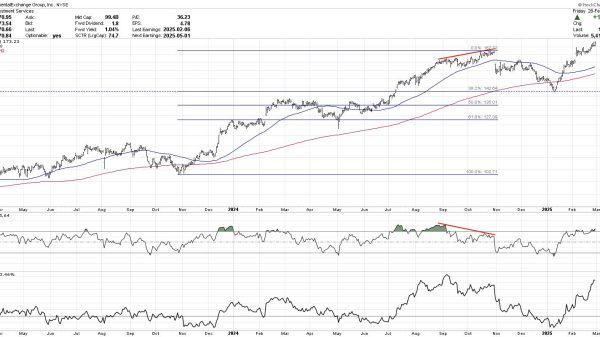Vanessa Brown Calder
In recent months, Alabama’s Supreme Court ruling on in vitro fertilization (IVF), the subsequent passage of a bill protecting fertility treatment in the state, and proposed federal IVF legislation have all generated new interest in a topic area once taken for granted by policymakers and policy analysts. Suddenly, IVF critics feel empowered to voice their skepticism about a popular medical process used to expand US families.
While certain Republicans have distanced themselves from the issue, some conservative and pro‐life groups have leaned into the IVF opposition. Last week, the Clare Booth Luce Center for Conservative Women hosted an event on the bioethics of IVF, where Heritage Foundation’s Emma Waters presented her critical views on the topic.
The event highlighted many themes and claims in Waters’ recent written work. Unfortunately, Waters’ work is heavy on assertions and light on credible facts and nuance.
Like many critics, one of Waters’ primary concerns is that IVF results in embryo loss. Perhaps in an attempt to exaggerate the extent of embryo loss, Waters claims that a single cycle of IVF creates “10 to 15 embryos on average,” resulting in 4.1 million embryos created per year by her estimate.
Yet these figures are unrealistic, given that the reported average number of eggs retrieved is between 8 and 15—a 2011 study found the median number was 9—and those familiar with the process know the number of eggs retrieved is not equal to the number of embryos produced.
Instead, the potential number of viable embryos produced by a given number of eggs declines at each stage of development. First, because not all retrieved eggs will be mature and therefore suitable for fertilization, then because not all mature eggs will successfully fertilize, and finally because not all fertilized eggs will develop into blastocysts that can be transferred to the uterus (two‐thirds of embryos’ development arrests). Given attrition rates at each stage, retrieving a median number of eggs would result in less than two viable embryos per cycle.
The imperfectness and inefficiency of conception under IVF makes it more similar to conventional reproduction than IVF critics care to admit. As the research study “Genetic Considerations in Recurrent Pregnancy Loss” states, “Human reproduction is remarkably inefficient; nearly 70% of human conceptions do not survive to live birth.”
In addition to exaggerating embryo loss, Waters also exaggerates the cost and risks associated with treatment. Waters claims that “on average, the complete cost of IVF is $72,000, as it can take multiple rounds to be successful.” Yet a US Department of Health and Human Services (HHS) fact sheet published this year states that one cycle of IVF is around $15,000 to $20,000, and an average of 2.5 treatment cycles are needed to become pregnant from IVF.
With that in mind, the average cost of successful IVF is between $37,500 and $50,000, without considering any options that reduce treatment cost, including outcome‐based (money‐back) programs that major clinics offer, IVF grants, discount programs, and the like. HHS likewise states that the average cost can “exceed $40,000.” (Note that in high‐cost markets, like Northern California, average cost could be higher, but this is by no means widely generalizable.)
It is clear that fertility treatment is not cheap, but $40,000 or more is quite different from $72,000. Furthermore, in the context of other medical procedures ($442,500 for a kidney transplant), $40,000 no longer seems like such an outlier. Most people consider creating new human life a valuable pursuit, making high costs worth it for many would‐be parents.
In addition to exaggerating figures, Waters characterizes IVF in frightening ways, including describing IVF as the “Wild West” of reproductive technology. Yet assisted reproductive technology is regulated at the state and federal levels and through professional societies like the American Society for Reproductive Medicine, Society for Assisted Reproductive Technology, College of American Pathologists, American Board of Obstetrics and Gynecology, and American Board of Urology.
Waters likewise suggests that preimplantation testing is used to “assess the embryo’s intellectual aptitude … how smart will the embryo be,” which sounds dystopian. But whether or not current technology is capable of making accurate predictions about intelligence, the concept is controversial, and neither widely available nor widely used.
Stunningly, Waters uses possible health outcomes like cancer, autism, and cleft palate as an apparent mark against IVF in her writing, even going so far as to quote a bioethicist who states “there is a world of difference between accepting the risk of a disabled child (where that risk is imposed upon us by nature) and ourselves imposing that risk in pursuit of our own purposes.”
Regardless of the cause, suggesting that human life is less worthy of pursuit due to the mere potential of health complications seems at odds with her organization’s ardent anti‐abortion position and in tension with her opposition elsewhere to preimplantation testing (a tool that can reduce the incidence of life‐altering or life‐ending chromosomal or genetic abnormalities).
Finally, one of the least defensible arguments against IVF from a public policy perspective is that the practice doesn’t subscribe to a personal interpretation of biblical passages, as put forward in Water’s recent commentary. In a recent piece published on Heritage’s website, Waters used biblical passages, including the book of Genesis’ exhortation that “a man shall leave his father and his mother and hold fast to his wife, and they shall become one flesh” (Genesis 2:24) to suggest that IVF falls outside the biblical vision for procreation.
It seems unlikely that this passage or others seriously contemplate IVF’s morality, though that is largely beside the point. While biblical interpretation is one factor that may matter a great deal to an individual’s personal decision about whether or not to use IVF, an individual’s interpretation of Bible passages should not be a deciding factor in crafting policy in a pluralistic society where A) many individuals are not religious and B) those that are religious reasonably interpret biblical passages differently.
In short, exaggeration and misinformation undercut persuasion. Conservative critics should dispense with these strategies going forward, given the consequential effects on children, families, and infertile couples across the country.
























